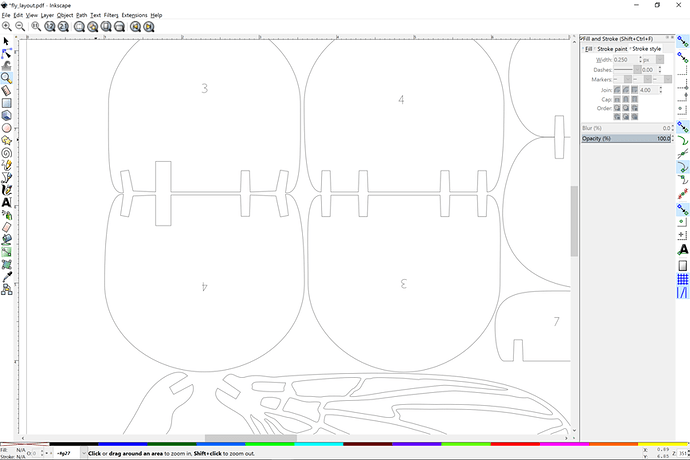The best way is to bring the model into Fusion 360 or OnShape and redo the tabs with parameters. But that is not as simple as just saying it. Parametric dimensions for slots and tabs require different approaches and different measurements. I’m am eager to see a file that would take the fly design recently posted and make it totally parametric for different materials.
The outset command does allow you to sneak up on it, but changes the scale of the whole drawing, unless you disconnect the tabs and slots and just do offsets on them. Still have issues with a tab requiring different dimensions and adjustments as a slot.
A more manual way that keeps the original design at scale and allows you to get precision in tabs and slots is to make a rectangle the correct dimension you need for the slots.
For my .207 " Chemcast acrylic, I need a slot of .201" to fit tight the normal thickness of the sheet.

Place the rectangle over the slot and do a Boolean difference to punch out a new slot.
This is going to be my test piece. Once I have the slot correctly sized, I’ll manually do other slots, centering them over the existing slots. I don’t have to do this to all the parts since many of them are mirror images or duplicates.
You also have to move the pieces around to find their mates to ensure you are matching the slots to its mating part.
It is a bit tedious, but with practice you can do it fairly quickly. Then you will have the file for that material.
Once again. This is not automatic and doesn’t solve for different materials. There is always the trade off. Learning a parametric 3D modeling program and getting the design perfected for all the materials (something I am working on but it takes too long).
For me it’s worth doing one design by hand. Then I have it. It’s easier to adapt for a second material once you know the work flow.
It’s a solution, but not idea. Just a practical way of doing it.
This is the central task that everyone faces. Designs are out there, but making them work for ProofGrade or your own materials takes effort.
I welcome suggestions and improvements.




 One of the issues I’m running into is that when you go to a thicker material, It is a good thing to enlarge the whole model and then use the bigger notch. Otherwise you get some places on the material that get too delicate or narrow. The problem is that you have to be careful to keep the mating part notches correct. These models aren’t easy to do with 2D.
One of the issues I’m running into is that when you go to a thicker material, It is a good thing to enlarge the whole model and then use the bigger notch. Otherwise you get some places on the material that get too delicate or narrow. The problem is that you have to be careful to keep the mating part notches correct. These models aren’t easy to do with 2D.